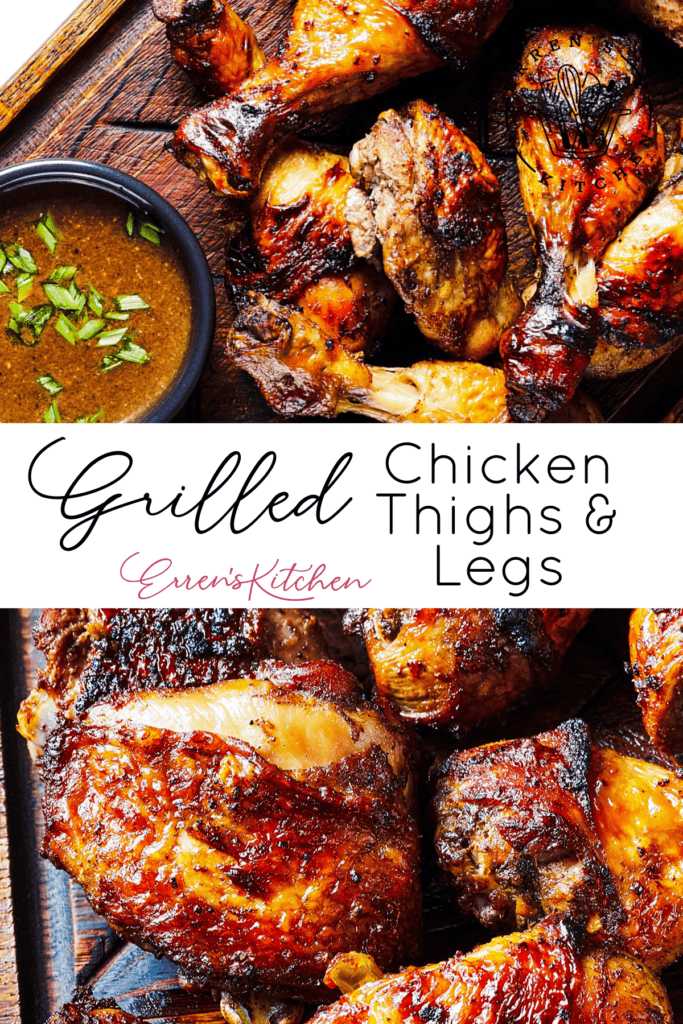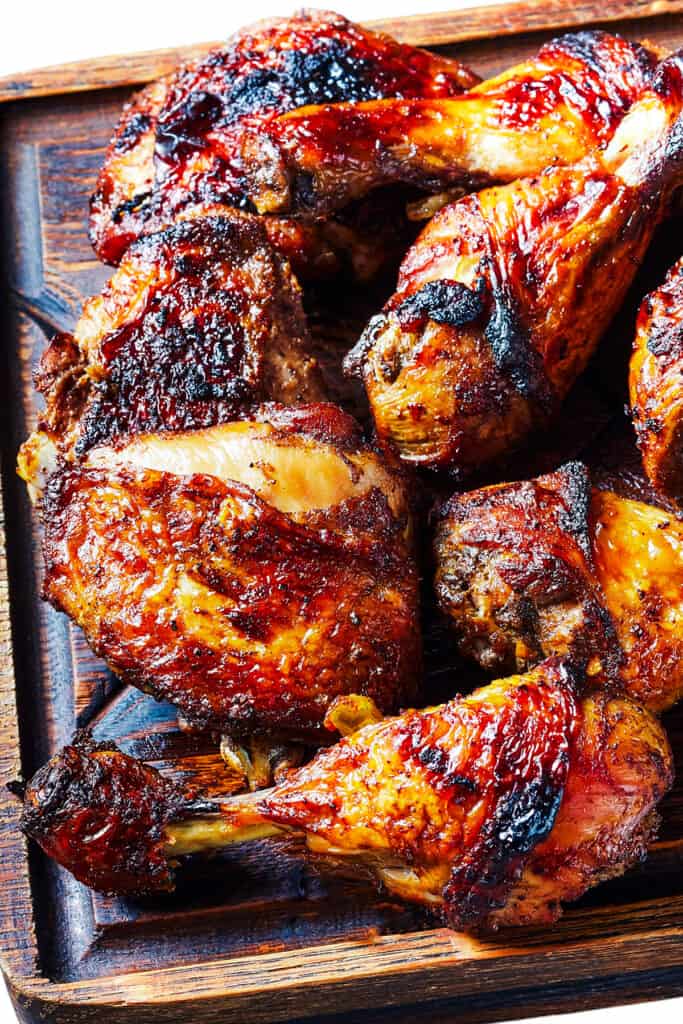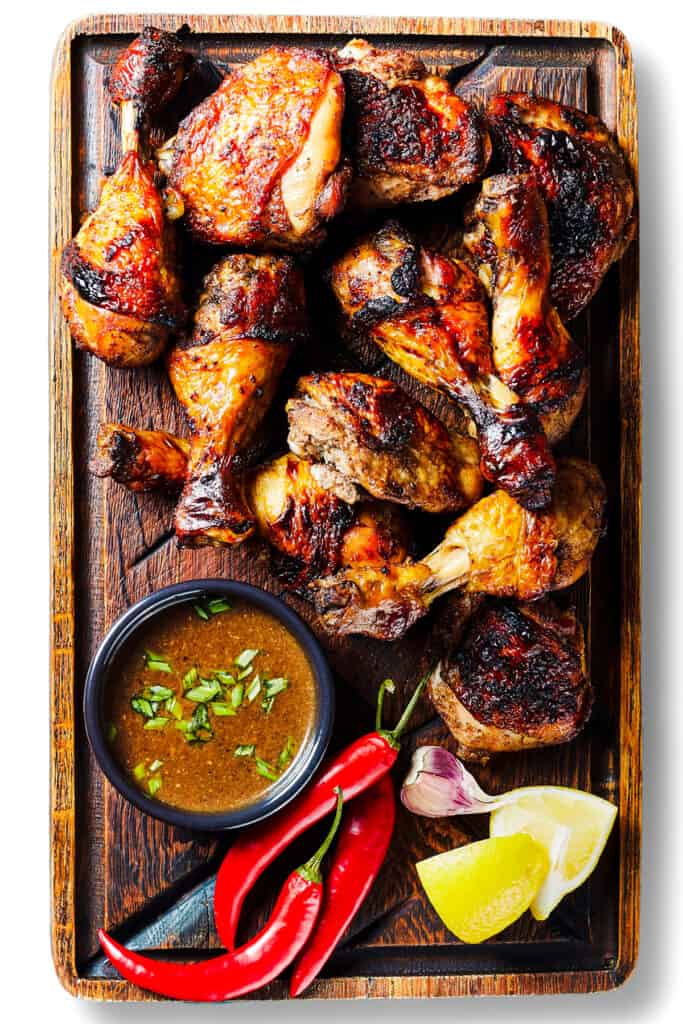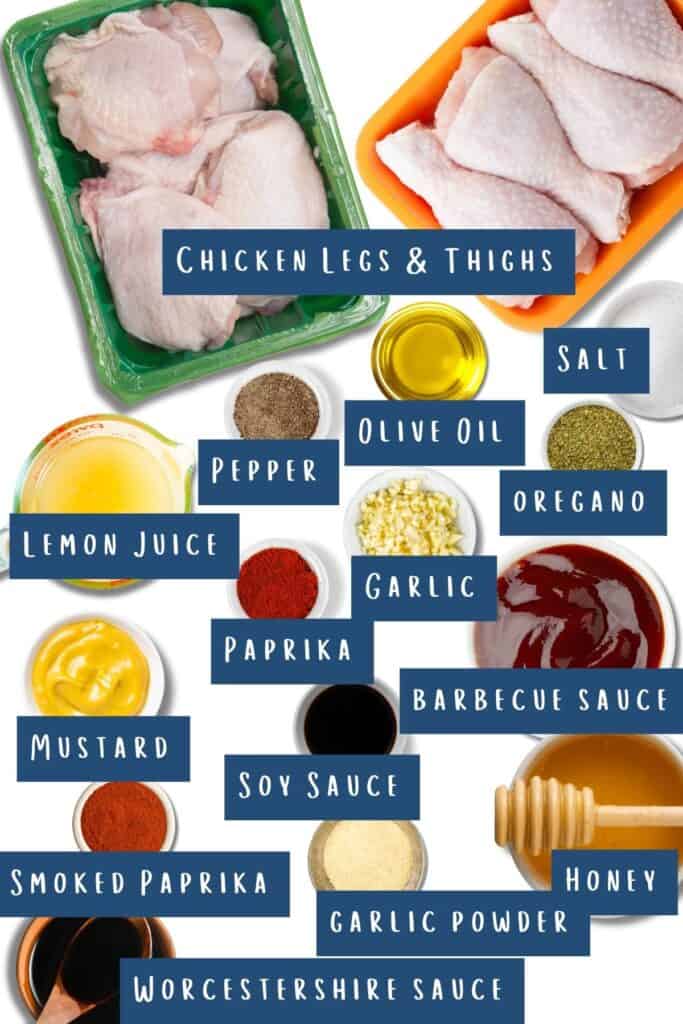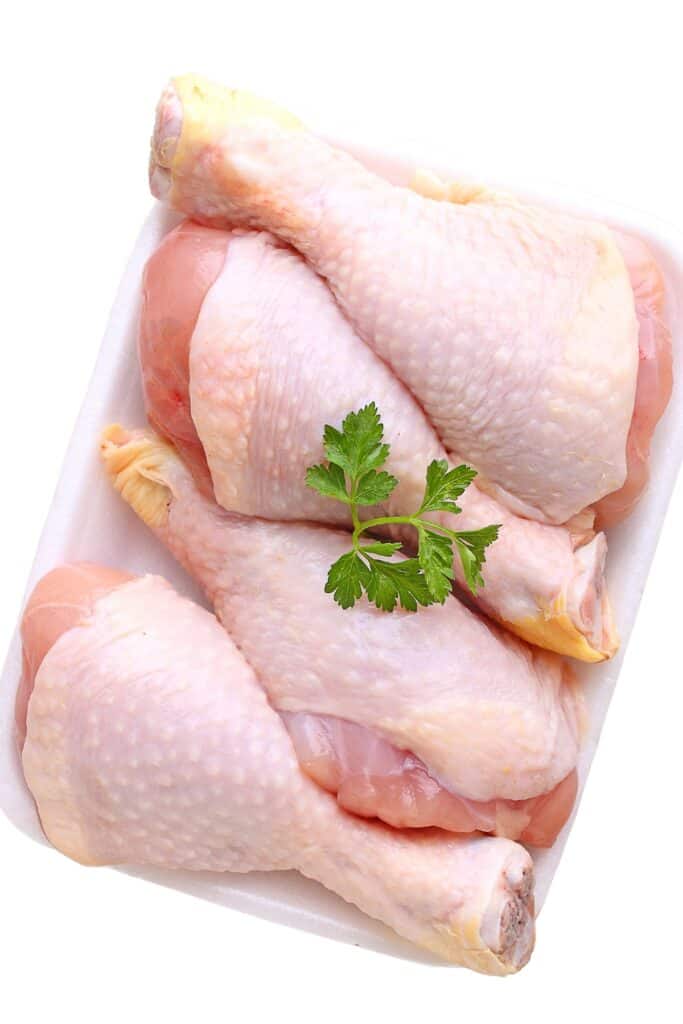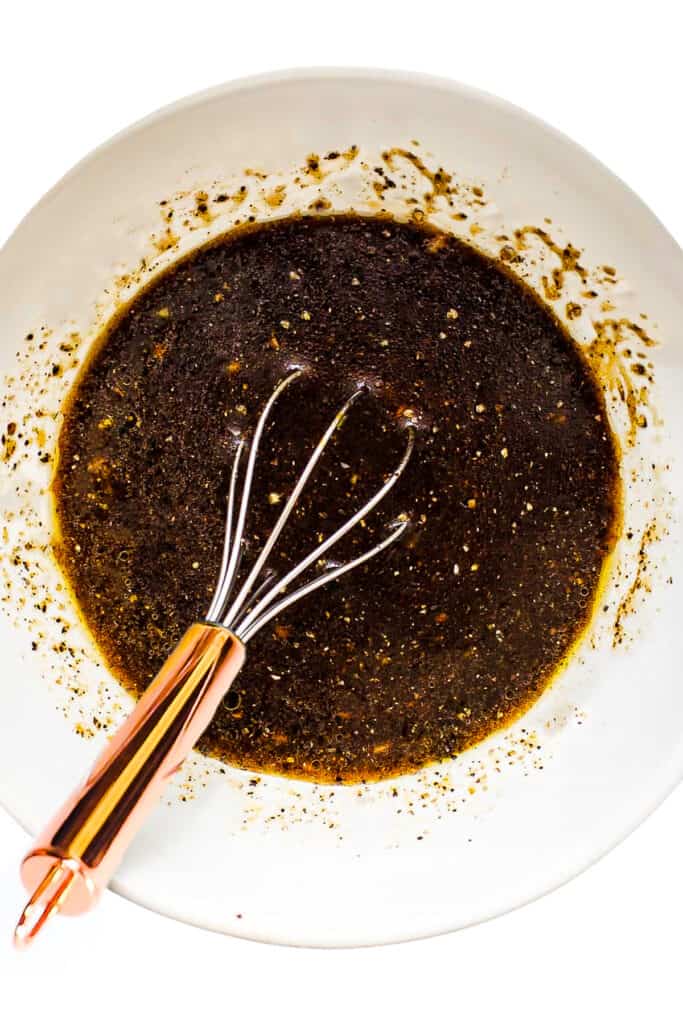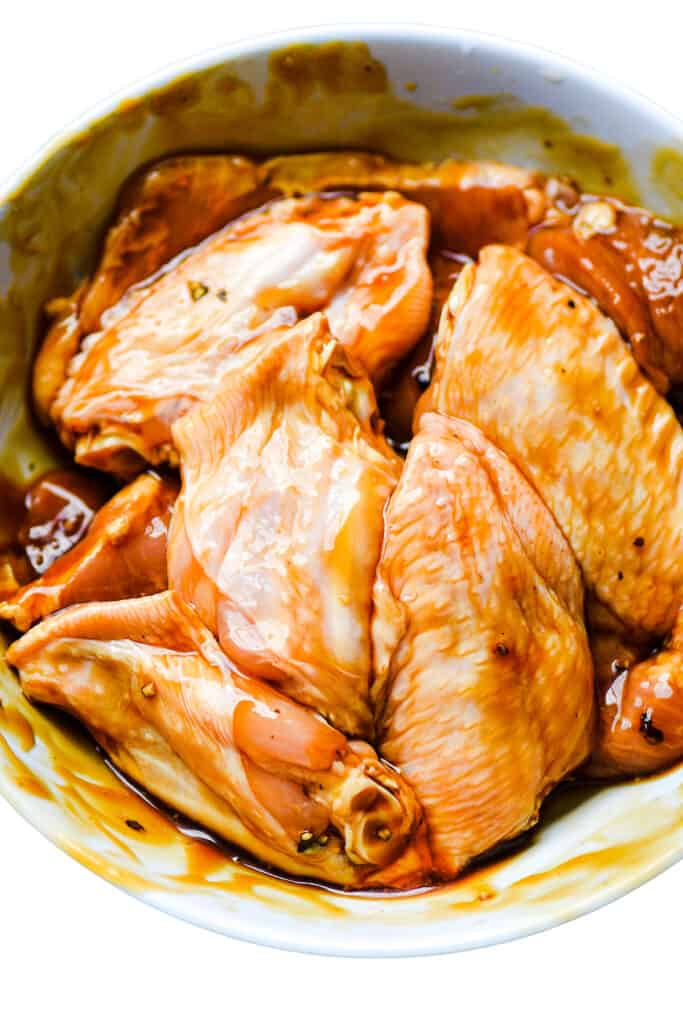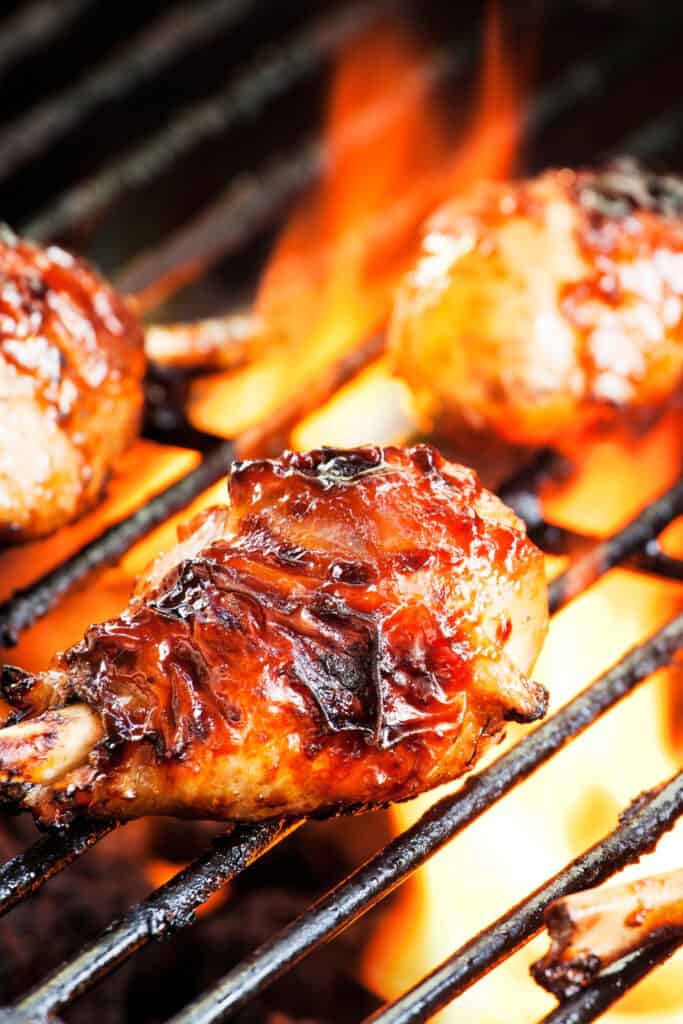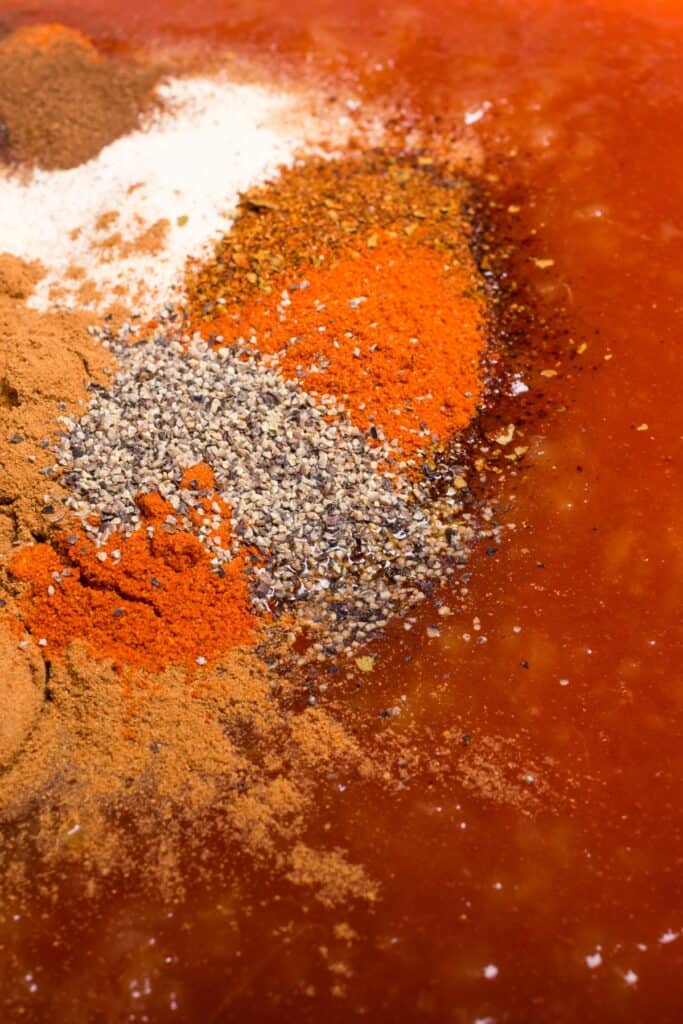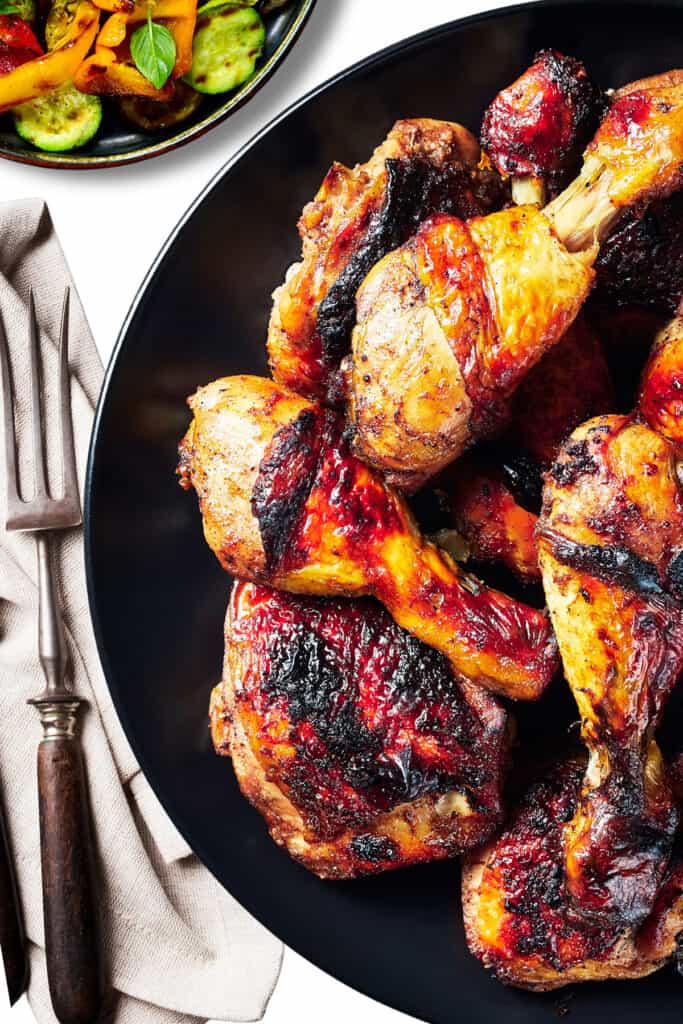Looking for a mouthwatering grilled chicken recipe that will make your taste buds dance with joy? Look no further! The juicy Grilled Chicken Thighs & Legs recipe is here to satisfy your cravings and elevate your grilling game. With a flavorful marinade, a delicious sauce, and perfectly grilled chicken pieces, this dish is a surefire hit for any gathering or family dinner. Get ready to indulge in tender, juicy, and irresistibly tasty chicken that will have everyone asking for seconds!
Step By Step Instructions
In a bowl, combine 1/4 cup of soy sauce, 1/4 cup of olive oil, 2 tablespoons of lemon juice, 2 minced garlic cloves, 1 teaspoon of paprika, 1 teaspoon of dried oregano, 1/2 teaspoon of black pepper, and 1/2 teaspoon of salt. Mix well to create the flavorful marinade that will elevate your chicken to new heights. Soy Sauce: Traditional soy sauce works perfectly for the marinade. You can use low-sodium soy sauce if you prefer a milder flavor or need to watch your sodium intake. For a gluten-free alternative, tamari sauce is an excellent substitute. Olive Oil: Light olive oil is recommended because of its higher smoke point. However, you can use any mild vegetable oil like canola or sunflower oil as a suitable substitute. Lemon Juice: Freshly squeezed lemon juice adds a tangy brightness to the marinade. If you don’t have lemons on hand, you can use lime juice instead, providing a similar citrusy flavor. Garlic: Fresh minced garlic cloves give the marinade a robust and aromatic kick. You can substitute it with garlic powder if you don’t have fresh garlic. Use 1/2 teaspoon of garlic powder for every clove of garlic. Paprika: This recipe uses both smoked and sweet paprika. Smoked paprika adds a delightful smoky flavor. If you don’t have smoked paprika, regular paprika can be used as a substitute without compromising the overall taste. Dried Oregano: Dried Oregano lends a herby note to the marinade. If you prefer a different herb flavor, you can substitute it with dried thyme or rosemary. Black Pepper: Freshly ground black pepper adds mild heat and depth of flavor to the marinade. Feel free to adjust the amount based on your spice preference. Salt: Salt enhances the marinade flavors and helps tenderize the chicken. Use kosher salt or sea salt for the best results. Adjust the amount according to your taste. Barbecue Sauce: Choose your favorite brand or choose homemade barbecue sauce for a personalized touch. Honey: Adds a touch of sweetness and helps to caramelize the chicken. You can substitute with maple syrup for a different flavor profile. Dijon Mustard: Spicy mustard or whole-grain mustard can be used instead of Dijon mustard for a more robust flavor. Worcestershire Sauce: In place of Worcestershire sauce, you can try soy sauce or balsamic vinegar for a different tangy element. Garlic Powder: Enhances the garlic flavor without the need for extra fresh garlic.
Fresh vs. Frozen: Choose fresh chicken with firm flesh and a pinkish color. For convenience and storage, opt for frozen chicken without freezer burn. Whole Chicken vs. Chicken Parts: Whole chickens offer versatility, while chicken parts provide convenience. Look for plump shapes and well-trimmed cuts. Organic, Free-Range, and Antibiotic-Free: Consider organic for no antibiotics or pesticides, free-range for outdoor access, and antibiotic-free for no routine antibiotic use. Quality Indicators: Check for natural pink color, firm texture, neutral odor, and intact packaging without leaks or damage. Local and Sustainable Options: Support local farmers for fresher, high-quality chicken and sustainable farming practices.
Place the 4 chicken thighs and 4 chicken legs in a large resealable plastic bag or a shallow dish. Pour the marinade over the chicken, ensuring that each piece is thoroughly coated in this delectable concoction. Seal the bag or cover the dish with plastic wrap, and let the chicken marinate in the refrigerator for at least 2 hours, or even better, overnight. This patience will reward you with intensified flavors and tender, juicy chicken. Preheat your grill to medium-high heat. This will ensure that the chicken cooks evenly and achieves that beautiful charred exterior while maintaining its succulent juiciness within. Remove the chicken from the marinade, allowing any excess marinade to drip off. Place the chicken pieces on the grill, skin side down, and let the magic begin. Grill each side for about 6 to 8 minutes or until the internal temperature reaches a safe and juicy 165°F (74°C). While the chicken grills, prepare the irresistible sauce that will elevate your chicken to new heights of flavor. In a small saucepan, combine 1/2 cup of barbecue sauce, 2 tablespoons of honey, 1 tablespoon of Dijon mustard, 1 tablespoon of Worcestershire sauce, 1 teaspoon of garlic powder, 1/2 teaspoon of smoked paprika, and a pinch of salt and pepper. Stir the ingredients over medium heat until the sauce is heated and the flavors meld together. Feel free to brush some of the sauce onto the chicken during the last few minutes of grilling for an extra layer of glaze and flavor. Once the chicken is cooked to juicy perfection, remove it from the grill and let it rest for a few minutes. Serve the grilled chicken thighs and legs with the sauce on the side or drizzled over the top. Erren’s Kitchen is written and produced for informational intentions only. We are not certified nutritionists, and the nutritional information found on this site has not been assessed or authorized by a nutritionist or the FDA. The nutritional information found in our recipes is offered as an estimate and should not be considered a guarantee or fact. The estimated data is provided as a courtesy and calculated through a third-party online nutritional calculator, spoonacular API. Although we do our best to provide accurate nutritional information, these figures should be considered rough estimates. Many factors, such as brands or products purchased and the nutritional fluctuations that naturally occur in fresh produce, can alter the effectiveness of the nutritional information in any recipe. Furthermore, various online calculators provide different results depending on their particular algorithms and nutrition fact sources. To obtain the most precise nutritional information in a provided recipe, you should calculate the nutritional information with the exact ingredients you are using when preparing the recipe using your preferred nutrition calculator.
